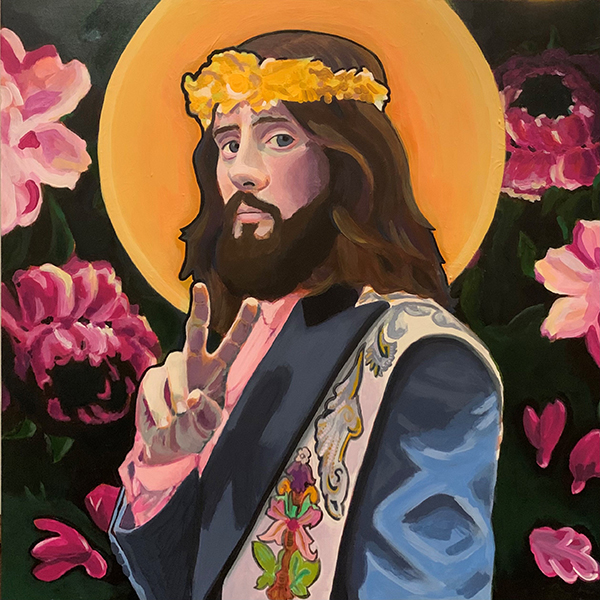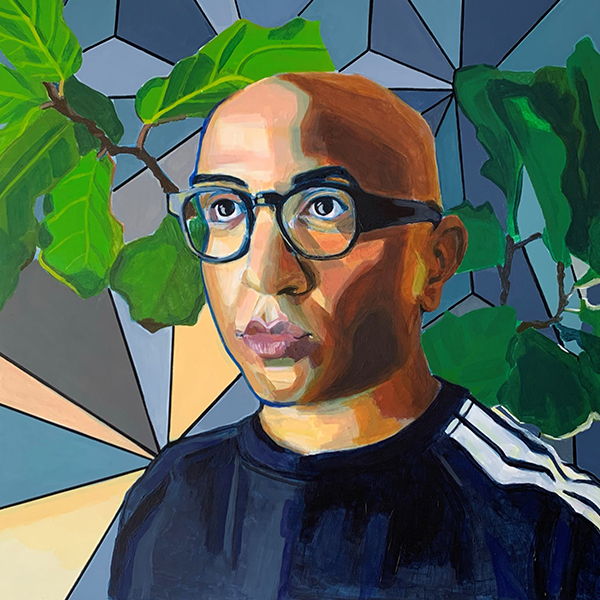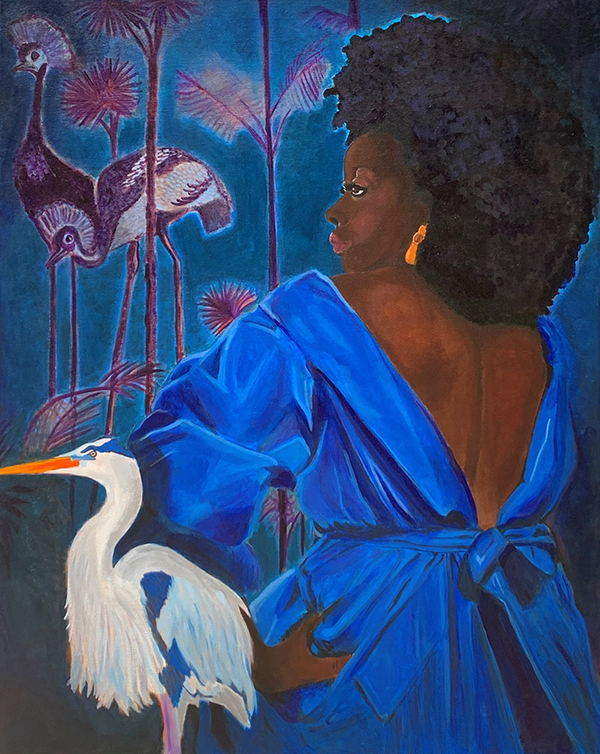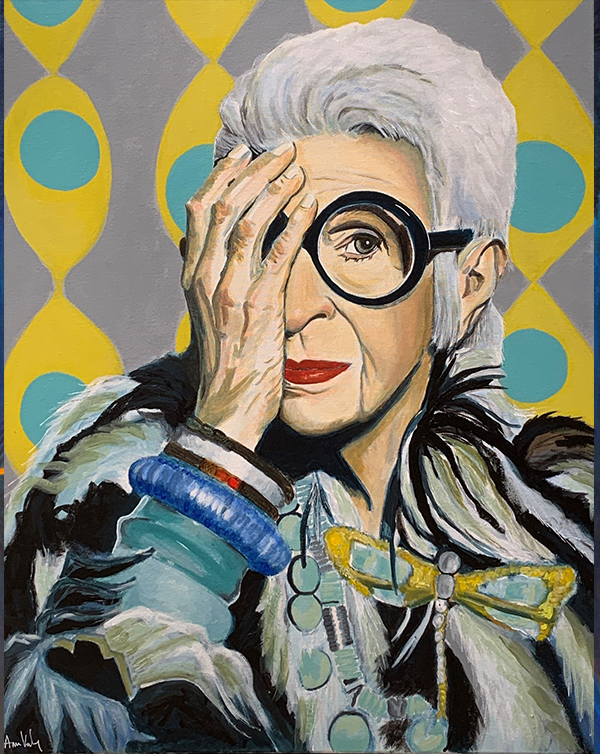Anson Koshy featured in campus piece about art and being a well-rounded physician
Anson Koshy, MD, MBE, is an assistant professor with the McGovern Center and Department of Pediatrics. His artistic side was presented in a recent news story.
- “Your Own Personal Jesus” – Anson J. Koshy, MD, MBE
- “Self Portrait” – Anson J. Koshy, MD, MBE
- “Untitled” – Anson J. Koshy, MD, MBE
- “Untitled” – Anson J. Koshy, MD, MBE
When you walk the halls of McGovern Medical School, you may notice the Art Wall, on the first floor. Part of the McGovern Beautification Committee’s redecoration of the Medical School following Tropical Storm Allison, the Art Wall has been a staple on campus since November 2005.
One of the mainstays of having works featured on the Art Wall is Anson J. Koshy, MD, MBE, assistant professor in the Department of Pediatrics, where four of his paintings were featured in the 2020 Fall Exhibit.
“When someone else ‘sees’ your story, that is a unique connection to share,” said Koshy, the medical director for the UT Physicians Center for Autism and Related Conditions at the Children’s Learning Institute. “We ask our patients to be vulnerable every day, but how often do we as physicians step out of our own comfort zones and do the same.”
Koshy began drawing at a young age, creating his own sketchbooks out of white copy paper stapled together. His early works included drawings for teachers in elementary school, but he never pursued the hobby fully until he arrived for medical school at the University of Debrecen Medical and Health Science Center, in Debrecen, Hungary.
“When I was in medical school, I started drawing as a hobby a bit more seriously, mostly as a way to decompress or stay creative,” Koshy said. “However, as medical school, residency, and fellowship became the focus of my life for several years, my artistic pursuits fell to the wayside.”
With his passion still calling, Koshy resumed painting in 2018, after joining the McGovern Center for Humanities and Ethics as an assistant professor. With support from colleagues at the center, and lessons from his art teacher Laura Spector, he decided to take on a new challenge in his artistic pursuits and began painting portraits.
“Portraits are difficult, and I wanted to take on that challenge — specifically trying to create a likeness to an individual,” Koshy said. “Creating a reference photo by combining images of people with unique or complementary backgrounds helps to create a narrative; that part of the process is the most fun.”
Along with the joy he feels when painting, Koshy also believes that, for him, painting is a form of meditation. He noticed that with traditional meditation, he was unable to focus on his breathing or sit in silence, but with painting, he could work for hours at a time and remain present in what he was doing. This balance he feels with painting has carried over into his clinical work as well.
“I am more aware of parent emotions from the start of a clinic visit, because I am more present and not hyper-focused on all that I need to get done in the appointment. Being able to start a clinic visit with a parent and asking about how they are feeling, why they are nervous, or what emotions they are feeling changes the entire dynamic of the appointment and suddenly obtaining a clinical history is easier.”
Through his art, Koshy has been able to become more well-rounded in his teaching, using his skills through various work in the McGovern Center for Humanities and Ethics like the Art of Observation, a collaboration between the Medical School and the Museum of Fine Arts, Houston, which allows students to spend several evenings at the museum to enhance their observational skills and examine their own biases.
Koshy has also been able to extend his own career through art. He was recently accepted as one of 15 health professions educators into the Harvard Macy Institute’s Art Museum-based Health Professions Education Fellowship, which uses the art museum environment to advance health professions educational goals. He also launched a digital humanities digest through the McGovern Center, called Human Ties, which fosters and showcases the creativity of McGovern students, faculty and staff in various creative formats.
For physicians, especially those who take on so many projects at once as Koshy does, burnout can become a real issue. He admits that he was once naïve enough to believe that he would not experience burnout, but has now found a way to channel his more frustrating work-related experiences into his art. He says that doing so has allowed him to create a visual timestamp of how he was feeling at a particular time.
“For clinicians, creative practices can give you a different way to look at what you’re experiencing,” Koshy said. “There is a unique sense of separation from self, when you can convey something in an image and perhaps leave the emotions related to that experience on the canvas and no longer carry it with you. I wouldn’t say that art is an escape from my work life, but I feel it is yet another lens with which we can examine our experience in medicine.”



